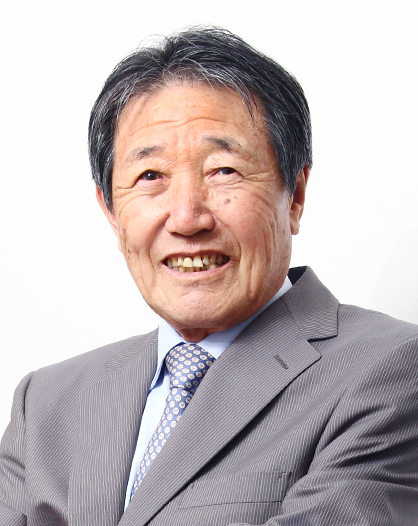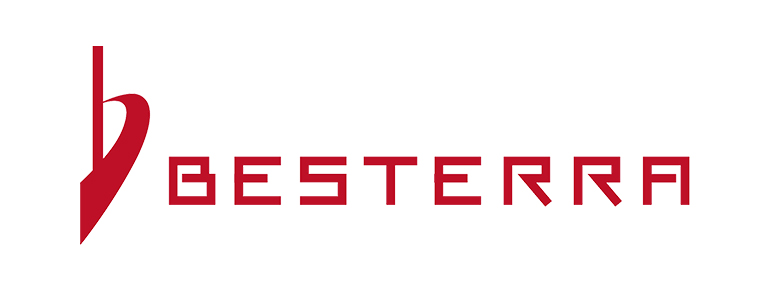| BESTERRA CO., LTD (1433) |
|
||||||||
Company |
BESTERRA CO., LTD |
||
Code No. |
1433 |
||
Exchange |
Tokyo Stock Exchange, First Section |
||
Industry |
Construction business |
||
President |
Yoshihide Yoshino |
||
Address |
4-24-3 Kotobashi, Sumida-ku, Tokyo |
||
Year-end |
January |
||
URL |
|||
* The share price is the closing price on March 20.
|
||||||||||||||||||||||||
|
|
*The forecasted values were provided by the company. The term ended Jan. 2014 is 9 months, because the accounting period has been changed.
*From the term ending Jan. 2019, consolidated performance will be posted, and net income means profit attributable to owners of parent (hereinafter called "net income.") * Stock split 1:4 in May 2015, 1:2 in February 2016. 1:3 in February 2017 (EPS has been revised retrospectively) This Bridge Report reviews on the outlook of BESTERRA for the fiscal year January 2018 and its business plans from fiscal year January 2019. |
| Key Points |
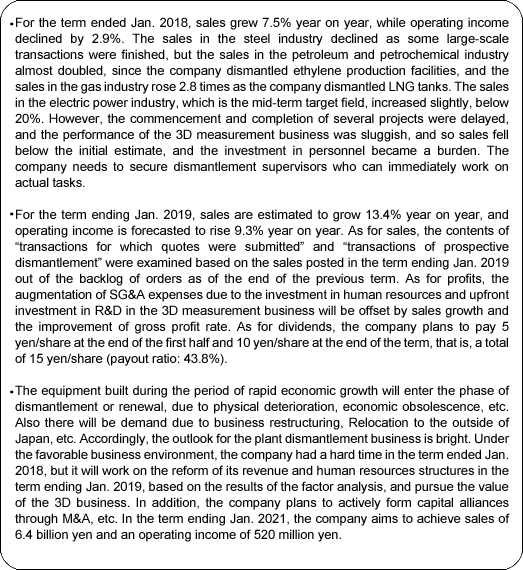 |
| Company Overview |
|
Code of conduct
We will fulfill our responsibilities as professionals. We constantly develop new technologies, "put a higher priority on safety than anything else," and offer our services to clients while increasing assurance under the motto "Swifter, more affordable, and safer." 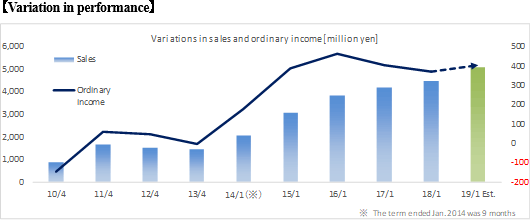 The company sticks to fabless management, in which it does not own necessary heavy machinery or engineers for dismantlement (so that they can handle any kinds of equipment of plants that have complex structures). 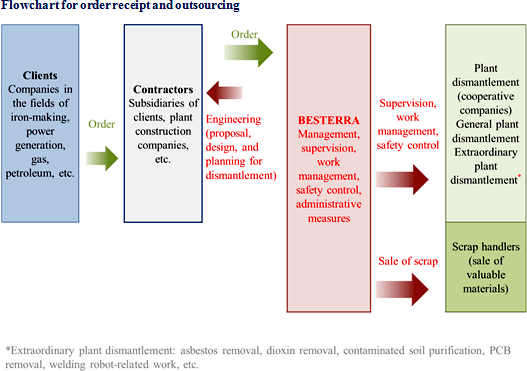  *Concerning 2 revenue recognition methods and seasonality of revenue recognition.
There are 2 revenue recognition methods for construction contracts: 1) a completed-contract (CC) method in which revenue is recorded at the end of the construction, and 2) a percentage-of-completion (PC) method in which revenue is recorded as construction progresses. For the projects from which valuable materials, such as scrap, are generated through plant dismantlement, the company basically applies the PC method to large-scale projects whose contract amount exceeds 50 million yen and whose period exceeds 3 months (from the term ended Jan. 2018), and the CC method to other projects. Meanwhile, the timing of revenue recording (completion of construction) using the CC method is often influenced by facility investment plans of the clients. In case of the company, the revenue is often recorded during the first quarter (February to April) and the fourth quarter (November to January) (seasonality of revenue recognition). With this method, however, changes of quarterly results may mislead investors,Therefore, the company is expanding the scope of application of the PC method step by step, and makes continuous efforts to smooth revenue.
|
| Fiscal Year January 2018 Earnings Results |
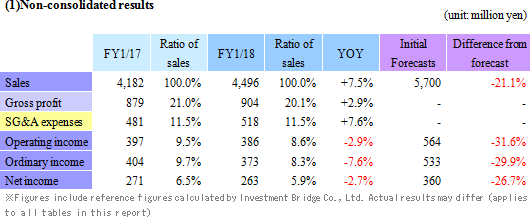 Sales grew 7.5% year on year, while operating income dropped 2.9% year on year.
Sales grew 7.5% year on year to 4,496 million yen. The sales from steelmakers (accounting for 37% of total sales) declined, as the dismantlement of blast furnaces contributed in the previous term, but the sales from petroleum and petrochemical companies (accounting for 27% of total sales) nearly doubled thanks to the dismantlement of ethylene production facilities, and the sales from gas companies (accounting for 13% of total sales) increased 2.8 times thanks to the dismantlement of LNG tanks. The sales from electric power industry (accounting for 22% of total sales), which is the mid-term target field, increased slightly below 20%. As for profits, the company has secured the target gross profit rate of 20%, but operating income dropped 2.9% year on year to 386 million yen, due to the augmentation of the cost of human resources and active recruitment, commissions and remunerations paid for changing markets, while sales declined. Non-operating expense increased due to the posting of the cost for going public amounting to 17 million yen, etc., but effective tax rate decreased. Consequently, net income was 263 million yen, down only 2.7% year on year. 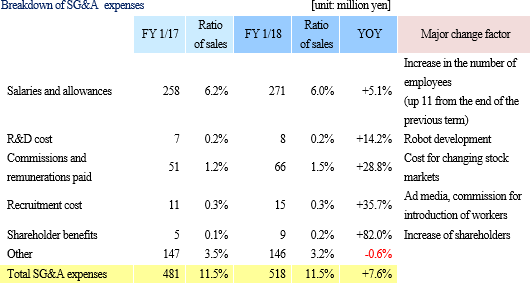 Reasons for the difference from the forecast
An increasing number of facilities enter the dismantlement or renewal phase, due to deterioration, economic obsolescence, etc., but the preparation period, including planning, for multiple projects was prolonged, the commencement and completion of dismantlement work were delayed, the number of dismantlement supervisors was insufficient to meet strong demand, and the number of orders in the 3D measurement business was sluggish. Accordingly, sales fell below the initial estimate, and profit declined.
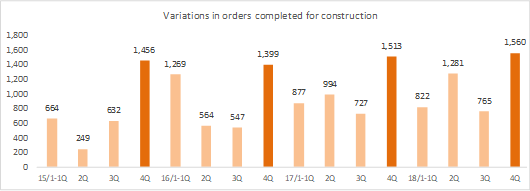     |
| Fiscal Year January 2019 Earnings Estimates |
|
(1) The company to accept the third-party allocation of shares of Hiro Engineering Co., Ltd. (reorganizing it into a subsidiary) and shift to consolidated financial reporting
The company will accept the third-party allocation of shares of Hiro Engineering Co., Ltd. (Shinjuku-Ku, Tokyo; representative director and president: Isao Tosaka), reorganizing it into a subsidiary. Then, the company will shift to consolidate financial reporting in the term ending Jan. 2019.Hiro Engineering Co., Ltd. supports paperwork of enterprises and education for developing young engineers, mainly as technical support for machinery, electricity, control, information systems, etc. mostly in the fields of aviation, space, plants, and industrial equipment. When BESTERRA conducted 3D measurement for nuclear power plants, Hiro Engineering dispatched competent personnel and gave technical support. Through this capital alliance, the company plans to utilize the advanced technologies and staffing know-how of Hiro Engineering for improving the quality of services and securing engineers. The company plans to acquire all of 900 shares (90% of voting rights) issued through the third-party allocation, which will be carried out by Hiro Engineering on Mar. 30, 2018, at 45 million yen. For your reference, Hiro Engineering Co., Ltd. was established in May 2015, and has a capital of 5 million yen. It dispatches workers and undertakes the design of equipment for aviation and space, energy-related apparatus, and industrial machinery. The sales for the term ended Mar. 2017 were 57,196 thousand yen (8,473 thousand yen in the term ended Mar. 2016), term-end net assets were negative 13,638 thousand yen (negative 3,263 thousand yen as of the end of the term ended Mar. 2016), and term-end total assets were 15,288 thousand yen (5,875 thousand yen as of the end of the term ended Mar. 2016).  Sales and operating income estimated to grow 13.4% and 9.3%, respectively, year on year
Sales are estimated to grow 13.4% year on year to 5.1 billion yen. The contents of "transactions for which quotes were submitted" and "transactions of prospective dismantlement" were examined based on the sales of 1,980 million yen (gross profit: 458 million yen) posted in the term ending Jan. 2019 out of the backlog of orders as of the end of the previous term.As for profits, gross profit rate is forecasted to be 20.4%, up 0.3 points, as the challenging large-scale project has been completed in the previous term. The augmentation of SG&A expenses due to the investment in human resources (an increase in staff) and upfront investment in R&D in the 3D measurement business will be offset, and operating income is projected to grow 9.3% year on year to 422 million yen. As for dividends, the company plans to pay 5 yen/share at the end of the first half and 10 yen/share at the end of the term, that is, a total of 15 yen/share (payout ratio: 43.8%). (3) Policy for distributing profit and return to shareholders
The 3 policies for profit distribution are the "investment for future growth," "internal reserve for fortifying the business base," and "return of 40% of profit to shareholders (dividend)." For the investment for future growth, the company will rationally allocate funds to equipment investment (robots and 3D measurement equipment), investment in technological development (dismantlement methods and robots), investment in systems (3D systems, BIM, and CIM), and strategic business investment (M&A, etc.).For the benefits for shareholders, the company will present a Quo card to shareholders according to the number of shares they hold as of the date of right allotment (end of Jan.) from the term ending Jan. 2018.  |
| Medium-term Management Plan (from the term ending Jan. 2019 to the term ending Jan. 2021) |
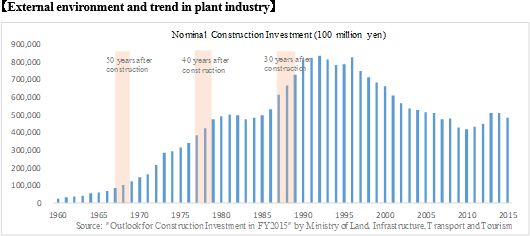 Moreover, a category of "demolition" was newly added to the categories of the Construction Business License in conjunction with the revision to the Construction Business Act in June 2016, providing a favorable condition for the company. The newly added category of "demolition" is aimed at strengthening the system of managing demolition work execution (improvement of safety and quality), and the company can make the most of its advantages that it has cultivated by pursuing safety and efficiency in demolition works through multifarious efforts, such as development of various patented demolition methods. Trend in the plant industry (based on the research carried out by the company)
The plant stock of the electric power industry is approximately 13.6 trillion yen (calculated by the company, the same hereinafter). According to the material presented by the company (source: Surveys and Statistics of Electricity by the Agency for Natural Resources and Energy (ANRE)), in Japan, the total output of thermal power generation is 174,014 MW (at 451 thermal power stations), that of nuclear power generation is 41,482 MW (at 59 nuclear power plants, including ones which have been abolished and ones being dismantled), and that of other means including hydroelectric, wind, and solar power generation is 59,653 MW. The electric power industry is facing the issue of reconsidering the energy structure. The plant stock of the steel industry is around 1.7 trillion yen. According to the material presented by the company (source: IR documents of various companies), the number of blast furnaces is 32 with the crude steel production volume of 90.4 million tons. The number of electric furnaces is 44 with the ordinary steel production volume by electric furnaces of 8.8 million tons and the special steel production volume of 4.2 million tons. Although companies in the steel industry moved ahead with corporate restructuring, they will embark on withdrawal of redundant equipment and equipment renewal from now onward. The plant stock of the petroleum and petrochemical industry is about 28.5 trillion yen. According to the material presented by the company (source: surveys conducted in 2012 by the Ministry of Economy, Trade and Industry (METI)), the number of oil refineries is 22 in 14 regions, with the refining capacity of 3,520 thousand barrels/day. The number of petrochemical industrial complexes is 15 in 9 regions, with the ethylene production capacity of 6,155 thousand tons. Many of the complexes were built during the period of high economic growth, and functionality enhancement and reorganization of the equipment are inevitable from the aspect of international competitiveness. In addition to the aforementioned, merger and reorganization are being propelled in various industries with the aim of boosting competitiveness. For example, in the electrical industry, Mitsubishi Hitachi Power Systems, Ltd. has been established through integration of the businesses of Mitsubishi Heavy Industries, Ltd. and Hitachi, Ltd., and Sharp Corporation, TOSHIBA Corporation and other companies have rationalized their respective businesses of consumer electrical appliances; in the paper industry, Oji Holdings Corporation has been set up (through merger of Oji Paper Co., Ltd., Honshu Paper Co., Ltd., and Kanzaki Paper Mfg., Co., Ltd.), and Nippon Paper Industries, Co., Ltd., the second largest paper company in the industry, has merged with Daishowa Paper Mfg. Co., Ltd.; in the shipbuilding industry, Universal Shipbuilding Corporation and IHI Marine United Inc. Japan have merged, establishing Marine United Corporation. 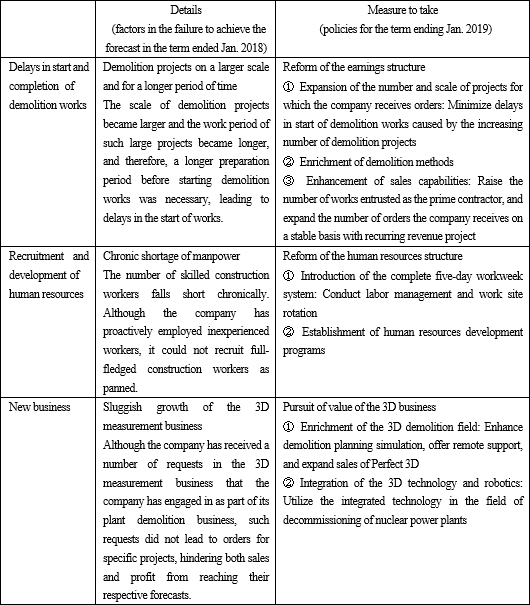 (1) Approaches in the term ending Jan. 2019
Reform of the earnings structure
The company will expand the number and scale of projects for which it receives orders, enrich demolition methods, and strengthen its sales capabilities.
Expansion of the number and scale of projects for which the company receives orders
As described below, the company will go ahead with individual strategies by setting targets for each of the fields of electric power, steel, petroleum and petrochemistry, and gas and others:
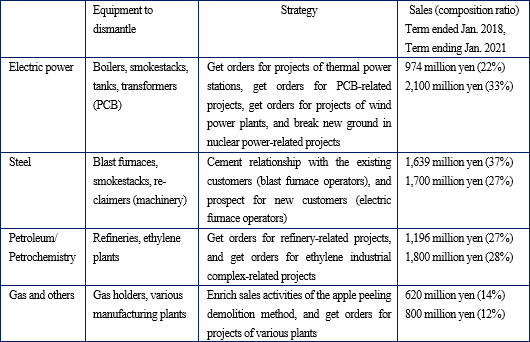  <Steel Industry> While blast furnace manufacturers produce three-fourths of crude steel and the other one fourth is produced by electric furnace manufacturers and metal rolling manufacturers, the company has made transactions with all the blast furnace manufacturers, electric furnace manufacturers, and metal rolling manufacturers. The blast furnaces (coke ovens) built during the high economic growth period will come up for repair in the next 10 years, and besides, each blast furnace manufacturer is integrating their respective production bases and enhancing the equipment there with the aim of increasing price competitiveness. The company will focus on making a proposal for demolition works using the 3D technology, as well as take in demand for demolition through numerous strengths, including the patented demolition techniques, and the safe and efficient demolition works the company has cultivated. <Petroleum/Petrochemical Industry> Japan has 22 refineries in 14 regions; however, demand is falling due to the population decrease, popularization of fuel-efficient vehicles, and fuel change. The petroleum and petrochemical industry, therefore, is being forced to take action, such as corporate restructuring and equipment reduction, and the government is encouraging reorganization through the Sophisticated Method of Energy Supply Structures and the Industrial Competitiveness Enhancement Act. Meanwhile, most of the 15 petrochemical industrial complexes in 9 regions in Japan use ethylene derived from naphtha (a substance generated through oil refining), which, in terms of raw material cost, is inferior to overseas industrial complexes that use ethylene derived from less expensive ethane (a by-product of natural gas and oil). In addition, as it cannot deny that the scale of the complexes in Japan is no match for that of overseas ones, companies in the industry are faced with needs for corporate restructuring and scaling down of equipment. The company will take in demand for demolition, using its advantageous experiences in demolition of not only refineries and ethylene plants, but also plant equipment which is a downstream business. Specifically, the company will open offices in the bay area, which is the so-called "Pacific belt zone," with a focus on proposing and marketing its unique demolition techniques. Enrichment of demolition methods
The company will propose the demolition methods using its competitive patented techniques, aiming to putting the methods into practical use.
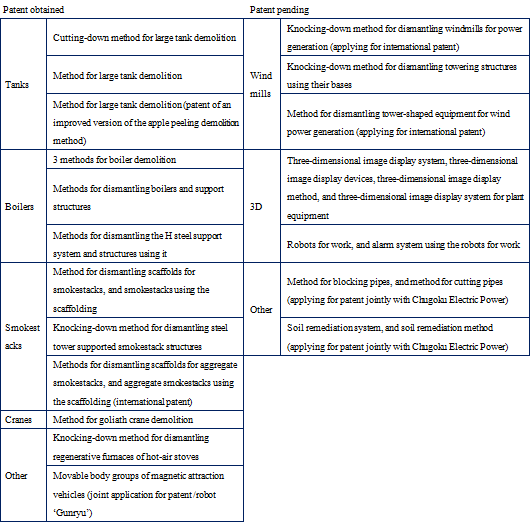 The "apple peeling demolition method" is a method of dismantling a large spherical tank, such as gas holders and oil tanks, by cutting it in spirals from the center of the ceiling of the enclosure part. The cut part spirals down to the ground gradually under the force of the earth's gravity (natural energy). The method enjoys superiority in a work period, cost, and safety, and has considerable competitive advantages, realizing "greater promptness, higher cost efficiency, and added safety." Furthermore, the company offers a robot for the fusing process, "Ring☆Star," which automates the "apple peeling demolition method." Conventionally, large spherical tanks have been dismantled by welding scaffolds to the surface of a spherical holder, dismantling the body by hand, and taking down the cut part with a crane, which is energy and time consuming, and besides, considered risky in terms of safety. In addition to expanding the intended use of "Ringo☆Star" through the development of new attachments, the company is developing a "robot using the point cloud 3D mapping technology" by carrying out research jointly with Kyoto University and Yamaguchi University. <Environment-related methods> The company has cultivated experiences and business results of a multitude of environment-related demolition works, using the "fireless methods" which do not require the use of fire. For example, although polychlorinated biphenyls (PCBs) are considered as a toxic substance and therefore totally abolished today, it had been used for many years in transformers and condensers because of its excellent thermal stability and chemical stability (electric insulation characteristics). In many cases, transformers and condensers are disposed of in conjunction with plant demolition works; however, because PCBs gasify when they are treated at the high temperature, posing a risk of inhaling the gas so generated, any firearms (such as gas cutting machines) cannot be used in demolition and withdrawal involving PCBs. The company is skillful at fireless and quasi-fireless methods using saber saws (which cut off objects with their saw blades moving in a reciprocating manner) that can cut off objects thicker than the thickness, which, in the industry, had been considered impossible to cut, through numerous devices, including measures against seizure of motors and recycling of blades. <Windmill demolition works> According to the material presented by the company, the wind power generation volume worldwide is 486,790 MW (by about 340,000 onshore power generation plants and about 4,000 offshore ones) with an annual growth rate of about 20%. In Japan, the number of wind power generation plants stood at 2,225 as of the end of 2017, expanding by about 90 every year. Meanwhile, as the useful life is approximately 15 to 20 years, and the windmills for power generation established in the early stage are reaching the application limit. Moreover, not a few plants need to be dismantled due to damage or fatal failure caused by thunderbolts or typhoons. Windmills for power generation are generally dismantled by building scaffolds outside the support columns. As some windmills have been built in mountain districts and on the sea, demolition of them is highly difficult. The company has invented windmill demolition methods that do not require scaffolds, and are filing a patent as the "knocking-down method for dismantling windmills for power generation (international patent)," "knocking-down method for dismantling towering structures using their bases," and "method for dismantling tower-shaped equipment for wind power generation (international patent)." Safety of workers can be improved dramatically and the work period can be shortened by using these patent-based methods. 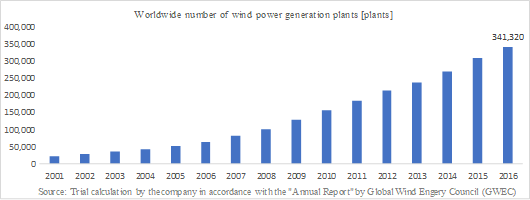 Enhancement of sales capabilities
The company will increase the ratio of demolition works ordered based on prime contracts and enrich sales bases. Currently, the ratio of works as a primary subcontractor entrusted by prime contractors is high; however, as the company is in a position to make the proposal of demolition plans based on customers' work schedules, the company possesses knowledge of the system of executing prime contract-based works. It, therefore, will increase the number of orders received directly from customers and the proportion of prime contract-based works, with the aim of improving earnings ratio. Specifically, the company will enrich advertising media, such as the website, promotional materials, and other various media, as well as present its products and services at exhibitions. It will also strengthen the structure further by carrying out multitudinous policies, including promotion of qualification acquisition programs, an increase in the number of sales support staff, and reform of the human resources structure. In addition, in order to receive more orders for recurring revenue projects (such as orders placed by customer groups on a continuous basis, and on-site staff deployment at customers' offices), the company will consider setting up new business bases in the Keihin region, and industrial districts, such as Sendai.
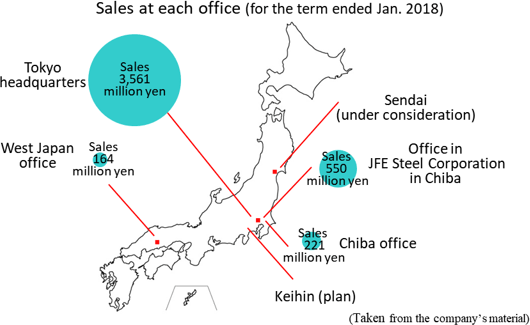 Reform of the human resources structure
The company, which specializes in executing and managing demolition works, needs to allocate a supervisor in each work site. Although it is essential to increase the number of dismantlement supervisors for a sustainable growth, the number of skilled construction workers falls short chronically; therefore, the company will introduce the complete five-day workweek system and endeavor to establish human resources development programs, with the aim of enhancing recruitment and development of human resources.Upon introduction of the complete five-day workweek system, the company will strive for improving the quality of demolition works through flexible work schedules by enhancing "work shift (time) management by the management" and "work site (labor) rotation." Meanwhile, in order to draw up human resources development programs, the company will begin with "introducing a demolition work expert course and a management course" and "enriching qualification acquisition promotion systems" as the evaluation system based on the actual situations of the dismantlement supervisors for setting up and operating a human resources system in which weight is attached to the individual workers' way of working. Then, it will propel a "human resources development program" as a system aimed at passing the skills and know-how down to less experienced workers from the full-fledged ones. 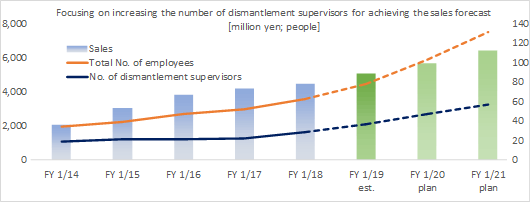 Pursuit of the value of the 3D business
The company will take advantage of the 3D technology as value added to the plant demolition business by providing the 3D measurement and data services along with demolition works (strengthening 3D demolition simulation) and offering on-site 3D data utilization support (introducing remote support). In addition, it will combine the 3D measurement technology with the technology of controlling the demolition planning robot manipulator in order to enter the field of decommissioning of nuclear power plants.As part of enhancing 3D demolition simulation, the company offers the 3D measurement service at the time of submission of estimates for projects of large-scale equipment, and the service of planning demolition works incidental to equipment repair. Three-dimensional laser measurement enables not only highly accurate demolition planning and production of estimates for a shorter period of time, but also implementation and provision of replacement of heavy machinery and equipment, and intervention simulations with three-dimensional CAD at the time of demolition works following equipment repair. Furthermore, the company will introduce remote support and establish a structure of remotely supporting on-site use of 3D data from the headquarters (conventionally, for using 3D data on site, it has been required to station workers with expertise in the 3D technology at customers' offices due to mastery of software and limits of computer specifications). Moreover, the company will break new ground in the field of nuclear power plant decommissioning by integrating the 3D technology and robotics. The company, ahead of any other companies, has put a remote demolition robot (Ringo☆Star) into practical use in plant demolition. It will strive to create an autonomous and remote demolition technology in which various 3D data obtained by robots developed through the integration of robotics and the 3D technology are utilized for dismantling nuclear power plants whose operation has been ceased. M&A strategy
Giving thought to a maximization of business scales and development of new innovative services, the company will proactively deal with business alliances and M&A in various fields, including demolition, systems, robots, human resources, and design. As described earlier, the company acquires Hiro Engineering Co., Ltd., which has engaged in human resources services, as a consolidated subsidiary as of March 30, 2018.
 (3) Profit-sharing policy/shareholder return
As described above, while taking account of "investment in future growth" and "retained earnings for strengthening the business bases," the company plans to distribute dividends at a payout ratio of about 40%.
|
| Conclusions |
|
|
| <Reference: Regarding Corporate Governance> |
 ◎ Corporate Governance Report
Update date: Sep. 15, 2017
Basic Policy
In order to promote sound business administration and win social trust sufficiently, our company recognizes corporate governance as the most important issue, puts importance on the improvement of the soundness, transparency, and fairness of business administration, and complies with laws and regulations thoroughly, and all executives operate business while keeping in mind that "the violation of laws or regulations would lead to management responsibility." In detail, our company disseminates and executes business pursuant to laws, regulations, and in-company rules thoroughly, by developing appropriate systems for making decisions about business administration, fulfilling duties, supervising work, conducting internal control, etc. It is also important to reform management systems for "achieving appropriate share price" and "increasing share price sustainably" to emphasize shareholders and strengthen the function to check business administration, to establish global-level corporate governance. The results of such efforts would win the trust of society, increase corporate value, and satisfy shareholders. <Reasons for Non-compliance with the Principles of the Corporate Governance Code (Excerpts)>
Our company has appointed 2 independent outside directors, who give their opinions to the Board of Directors and each director and, when necessary, offer advice by utilizing their professional knowledge and extensive experiences as corporate managers. Although our company has not established any committees as optional advisory bodies, we consider that, at the moment, our company has successfully received appropriate involvement and advice from the independent outside directors at meetings of the Board of Directors. <Disclosure Based on the Principles of the Corporate Governance Code (Excerpts)>
Our company may obtain and hold shares of our partner companies and other companies when we determined that relevant shareholdings will contribute to medium- and long-term increase in our corporate value from the perspectives of maintenance and enhancement of long-term and stable transaction relations with partner companies and expansion of our business by strengthening such relations. In meetings of the Board of Directors, our company regularly examines if shares held in a manner described in the foregoing (i.e., strategically held shares) will improve our corporate value and checks the aim and rationality of relevant shareholdings based on the examination. Our company will properly exercise the voting rights by making comprehensive judgment from the perspective of improvement of our corporate value. Each year, our company conducts the survey of transactions with the executives, the employee shareholding association, and major shareholders in order to confirm whether or not any transactions among parties concerned were carried out. In addition, our company has developed an instruction manual on production of financial reports, and in the event that our company makes transactions with the executives, the employee shareholding association, major shareholders, or any other parties, thorough discussion about the necessity of relevant transactions will be held by the internal audit department, management department, the Board of Directors, and the board of auditors in order to avoid any loss imposed by such transactions on interest of our company or common interests of shareholders. Regarding requests from shareholders for dialogue (interviews), our company believes that we should express a positive attitude within a reasonable scope in order to contribute to sustainable growth and medium- and long-term improvement of the corporate value of our company. Aiming to promote constructive dialogue with shareholders, with the planning department designated as a department in charge of IR activities, our company holds financial results briefings targeted at financial institutions and investors semiannually and discloses corporate information as needed on our website and through the system of optional disclosure offered by Tokyo Stock Exchange. Disclaimer
This report is intended solely for information purposes, and is not intended as a solicitation for investment. The information and opinions contained within this report are made by our company based on data made publicly available, and the information within this report comes from sources that we judge to be reliable. However we cannot wholly guarantee the accuracy or completeness of the data. This report is not a guarantee of the accuracy, completeness or validity of said information and opinions, nor do we bear any responsibility for the same. All rights pertaining to this report belong to Investment Bridge Co., Ltd., which may change the contents thereof at any time without prior notice. All investment decisions are the responsibility of the individual and should be made only after proper consideration.Copyright(C) 2018 Investment Bridge Co.,Ltd. All Rights Reserved. |

